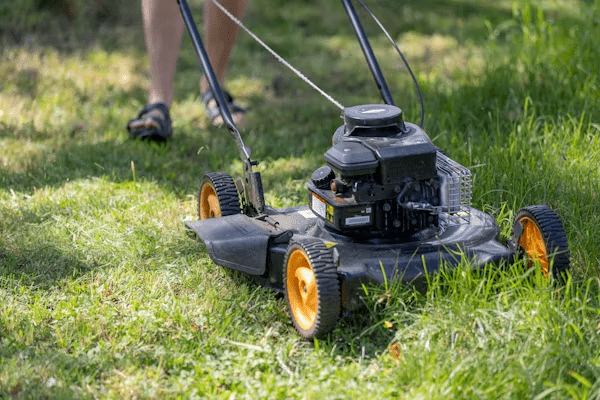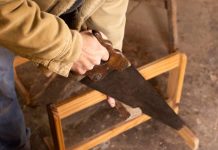
A well-maintained lawn mower is key to achieving a tidy and vibrant yard. Among its many parts, the belt plays a vital role in ensuring smooth operation by transferring power from the engine to the cutting blades and wheels. When you encounter performance problems, the lawn mower belt is often the culprit. Learning how to identify and fix common belt issues will help you maintain optimal mower performance and avoid costly repairs.
What the lawn mower belt does and why it’s important
The lawn mower belt functions as the link that transfers power from the engine to the mower’s moving components. Its primary function is to transfer power, enabling the blades to spin and the mower to propel forward. Without a properly functioning belt, your mower won’t cut evenly or move as intended, which leads to frustration and poor lawn care results.
Belts endure a lot of stress, including heat, tension, and friction, all of which can wear them down over time. Unlike other mower components that might be more obvious to inspect, belt problems can sometimes go unnoticed until they cause significant issues. Understanding the role of the belt helps you appreciate why maintaining it should be a priority for every mower owner.
Recognizing signs your lawn mower belt needs attention
Noticing early symptoms of belt problems can save your mower from major breakdowns. One of the most common signs is a decrease in cutting efficiency. When uneven patches appear in your lawn or the mower takes more time than usual, it could be a sign of a slipping or worn belt.
You might also hear unusual sounds such as squealing, chirping, or grinding when you start mowing. These noises typically indicate that the belt is slipping on the pulleys or has become glazed from excessive heat.
In the middle of a mowing session, if your blades suddenly stop spinning or the mower loses drive power, the lawn mower belt could be broken or severely worn. Frequent visual inspections are key—look for cracks, fraying edges, or shiny, worn surfaces on the belt, which signal it’s time for a replacement.
Troubleshooting tension and alignment problems
A properly tensioned belt is essential for smooth mower operation. If the belt is too loose, it will slip during use, reducing blade speed and cutting effectiveness. On the other hand, a belt that is overly tight can put excessive pressure on bearings and other components, leading to premature failure.
To troubleshoot belt tension, consult your mower’s manual for the recommended specifications and use a tension gauge if available. Adjustments often involve repositioning idler pulleys or loosening/tightening belt guides.
Alignment also plays a critical role. Misaligned belts wear unevenly and risk slipping off pulleys entirely. Dirt, debris, or bent pulleys can cause misalignment. Cleaning the mower deck and checking pulley conditions regularly will help maintain proper belt tracking and extend the belt’s lifespan.
Inspecting and replacing a worn or damaged belt
Safety first: always disconnect the spark plug before inspecting your mower. To check the belt, you’ll need to take off the mower deck or the protective belt cover. Examine it carefully for visible damage—this includes cracks, splits, glazing, or frayed edges.
If you find any defects or if the belt feels brittle, it’s best to replace it. When choosing a replacement, make sure the new belt matches the size and specifications of your mower model exactly. Installing a belt that’s too long, short, or incompatible can cause more damage and reduce mower performance.
Replacing the belt typically involves routing it around the pulleys according to the mower’s diagram, ensuring it sits correctly and tension is properly adjusted. Testing the mower after installation confirms everything is working smoothly.
Maintenance habits to keep your mower belt in top condition
Proper upkeep will extend the life of your mower belt and prevent many common problems. Start by cleaning the mower deck and belt area after every use to remove grass clippings, dirt, and debris that can cause the belt to slip or wear prematurely.
Avoid mowing over rocks, sticks, or other obstacles that can damage the belt or pulleys. Regularly check the belt tension and alignment, adjusting as necessary to maintain optimal performance.
Lubricate moving parts like idler pulleys and mower wheels as recommended by the manufacturer to reduce strain on the belt system. Seasonal inspections and replacing the belt proactively before severe wear sets in can save time and money.
Choosing the best replacement belts for reliable performance
When it’s time to replace your belt, quality matters. Many mower owners make the mistake of buying cheap, generic belts that wear out quickly and don’t fit perfectly.
Purchasing a durable, manufacturer-approved lawn mower belt from trusted suppliers ensures you get a product designed to withstand the specific demands of your mower. These belts often feature reinforced materials that resist stretching, cracking, and heat damage, making them last longer and perform better.
For example, sourcing belts from reputable vendors like udcparts.com guarantees compatibility and quality, giving you peace of mind that your mower will run efficiently.
Conclusion
Troubleshooting and resolving lawn mower belt issues is essential to maintaining a healthy, well-kept lawn. By recognizing the signs of belt wear, addressing tension and alignment problems, and performing regular maintenance, you can keep your mower in top shape.
Investing in quality replacement belts and proper care will not only improve your mower’s performance but also extend its service life. With the right approach, your mower will deliver consistent, reliable results season after season, making lawn care easier and more enjoyable.










